Rarity Chart
Much like Pillowings, Lintlings have tiers of rarity. Whether this is because certain features require more life force to make, or some other reason, no one is sure yet. However, they follow a very similar system to their Pillowing counterparts!
- Common: These traits are the most likely seen on any lintling in your home.
- Uncommon: These traits aren't as common, but around enough that you don't blink much at them. It's pretty normal to see lintlings with these features around the house.
- Rare: Lintlings with these features are more unusual and rare to see in your home. They tend to be a little more eye catchy.
- Very Rare: You would hardly see lintlings around your home with these features. There are just a few with this kind of uniqueness about them that makes them hard to miss.
- Special: Exceedingly rare, generally only found in Generation 1 Lintlings.
Generation Permission Chart
This just means that only certain generations can get access to certain features. The list below is a helpful quick list to make sure you're following the rules of your Lintling. Like for example, Generation 1 lintlings have access to ALL features including Special ones. Whereas Generation 4 lintlings are only allowed to use Common and 1 Uncommon feature because they're made with smaller amounts of magic.
- Generation 1: All features, including Special. Unavailable to users.
- Generation 2: All Common Features, all Uncommon Features, and 1 Rare Feature.
- Generation 3: All Common Features and 4 Uncommon Features.
- Generation 4: All Common Features and 1 Uncommon Feature
Body Sizes
| Image
|
Size
|
Description
|
| Common Size
|

|
Small
|
Most common Lintling size, he smallest lintlings can be around the same size as mice. Usually about 3 inches long.
|
| Uncommon Size
|

|
Medium
|
Less common than small Lintlings, these are about the size of hamsters and rats ranging anywhere from 5 inches to 8 inches.
|
| Rare Size
|

|
Large
|
The largest lintlings are much more rare since they have a much harder time concealing themselves or thriving in colonies. Their sizes range from 12 inches to almost 15 inches.
|
Coat Types
| Image
|
Coat Types/Features
|
Description
|
| Common
|
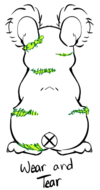
|
Wear and Tear
|
Minor wear and tear is common, usually shown with stitched closed holes, or bits of fluff poking out.
|
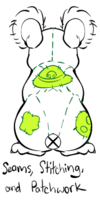
|
Seams, Stitching & Patchwork
|
Very common Lintling accessories! Cute patches and stitching can really show off a Lintling's personality.
|
| Uncommon
|

|
Buttons
|
Buttons make adorable little accessories for the more fashion-savvy Lintling.
|
| Rare
|
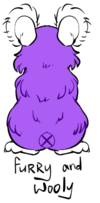
|
Furry & Wooly
|
Lintlings almost are never seen with long coats. Fluffy is rare, but much more common compared to a long coat. Normally this much fur would only get in the way and keep them from doing their tasks more effectively. But if they live in colder climates they will be grateful for the extra padding.
|
| Very Rare
|
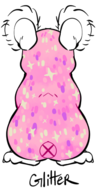
|
Glitter
|
Extremely rare as it tends to make quite a mess! Very eye-catching though, you'll never lose a glittering Lintling.
|
| Special
|
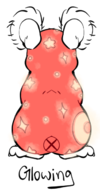
|
Glowing
|
(Info here)
|
Lintling Ears
| Image
|
Ear Type
|
Description
|
| Common Ears
|

|
Short/Standard
|
All average Lintlings have a short twist of an ear, it's the most common one you'll see in everyday colonies.
|

|
Low/Droop Short
|
Like the short upright ears, these hold the same smaller amounts of fluff, instead the shell is naturally twisted down to the sides letting the fluff fall low.
|
| Uncommon Ears
|

|
Medium
|
Some Lintlings have a wider and longer ear twist that holds the fluff up to more a point. It helps them look alert and signal other lintlings with a simple twitch of their ears.
|

|
Low/Droop Medium
|
The low set medium ears function much the same to the low shorts, only real difference being is that they can hold more fluff.
|

|
Tube
|
(Info Here)
|
| Rare Ears
|

|
Large
|
Like the medium ear twists, the large ones stand up very tall keeping the fluff usually pretty erect. Usually they can hold a lot more fluff than the medium or short ears could which make them more sensitive to changes in the air or far away sounds. Lintlings with these ears are usually look outs while they gather supplies in dangerous territory.
|

|
Low Large
|
Hanging down low, the twist is still held up and open to hear very well. The fluff usually drapes down the sides of the head. Much like the upright large ears, these also serve a sensitive purpose. They can not feel the air nearly as well as upright ears, but they are much more susceptible to vibrations coming up from the ground as other creatures approach. It's said they can even sense the lightest pillowing coming just by it's soft foot steps.
|

|
Puppy
|
The longer drooped ears are more rare and said to give Lintlings a puppy-like demeanor. It's even said that hosts seem to take more pity upon Lintlings with this type of ear due to the cute factor.
|
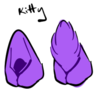
|
Kitty
|
If you want a more feline look to your Lintling's ears, this is what you want!
|

|
Bunny
|
Hoppy little bunny ears for the lapin lovers out there.
|
Ear Fluff
| Image
|
Ear Fluff Type
|
Description
|
| Common Ear Fluff
|

|
Short/Standard Length
|
These are the most commonly seen fluffs for most Lintlings. They don't make for the best at sensing threats around them, but they can easily pick up on Lintling chatter and signals. Can be any of the following Common fluff types.
|
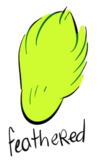
|
Feathered
|
Soft and thinner, the feathered fluff type ears normally are draped much like the fur on a papillon dog.
|
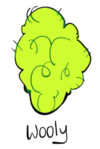
|
Cotton/Wooly
|
These are thicker, curlier, and woolier than the other fluff types. It has a much easier time sitting up without losing it's shape.
|
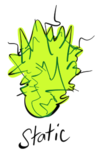
|
Static
|
It looks like the lintling with these fluffs got shocked by a bolt of electricity! Maybe a bad meeting with an outlet or electrical cord? These fluffs have no trouble staying upright, but can be rather unruly.
|
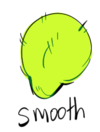
|
Smooth
|
Soft and even silky to the touch. These ears look firm and solid much like a normal animal's. They seem to hold sculpted shapes very well and look shiny while doing it.
|

|
Fuzz
|
Similar to the Feathering fluff, this fluff instead just holds it's poof straight out like a pussy willow or cat tail plant. It doesn't like to hold shapes.
|

|
Tangled
|
This mass of random fluff seems to always be a strange mess. It can never be tamed and seems to never go in the direction you want it too. It really has a mind of it's own.
|
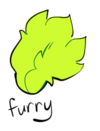
|
Furry
|
(Info Here)
|
| Uncommon Ear Fluff
|

|
Buzzed
|
A lintling must always have fluff in their ears, without it they would not be able to hear or sense things around them. Even with the most basic shortest fluff aids them in hearing the squeaks and chirps of their fellow lints!
|

|
Medium
|
Lintlings with these ears are slightly less common, but still around enough. They have a better time sensing danger in the air than their short and buzzed lintling friends so they try to look out for the groups best they can.
|
| Rare Ear Fluff
|
| Very Rare Ear Fluff
|
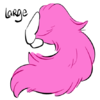
|
Large
|
These are rare to see on lintlings but when they are found they are usually the quickest of the lintling bunch. They can sense danger from the tips of their fluff and send out the signal to move it! They don't ever seem to be caught off guard.
|
| Special Ear Fluff
|

|
Extra Long
|
You would think more fluff the better, better for hearing and sensing? Not always! If the fluff can't stop upright into the air and flops over onto it'self it actually muffles the noises with it. These longer fluffs are very rare and don't serve much use other than to be decorational.
|
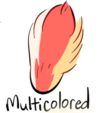
|
Multicolored Fluff
|
Thie is extremely rare and unusual. Most lintlings have a solid color for their fluffs, maybe a slight tint of similar color in it. But never a mixture of two or more colors.
|
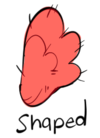
|
Shaped Fluff
|
To make very sophisticated shapes out of the fluff takes considerable skill, time, and energy to do. The only ones who would be usually skilled enough to do this would be artisans creating 1st gen lintlings. But on very very rare occasions some 1st and 2nd gen lintlings have been able to craft decorative shapes as well.
|
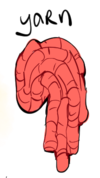
|
Yarn Fluff
|
(Info Here)
|
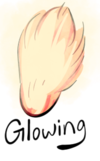
|
Glowing Fluff
|
(Info Here)
|
Lintling Eyes
| Image
|
Eye Type
|
Description
|
| Common Eyes
|
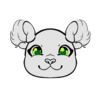
|
Round (Standard)
|
This is the most common pupil shape you will see on any Lintling.
|
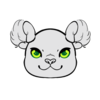
|
Full (Wild)
|
Just as common as the Round eye shapes, instead of there being any sclera (whites) showing, the iris takes up the entire eye. These Lintlings are said to have better sight than others.
|
| Uncommon Eyes
|

|
Slit
|
This is a little more uncommon, but it's not unheard of to see Lintlings around who have cat-like slitted pupils.
|

|
Glass
|
These marble like eyes are just similar to the Round iris/pupil normally seen, the only difference being is the lack of pupil in this shape.
|

|
Beads
|
Not seen as often as Round or Full, some Lintlings have cute little beads instead, giving them a simpler, cuter look.
|

|
Buttons
|
Like beads, buttons are less common, but can also give Lintlings a cute, simple face!
|

|
Stitching
|
A little less common, but some Lintlings can really only manage some stitches for their offsprings' eyes. Effect on vision currently unknown.
|
| Rare Eyes
|

|
Dark
|
These are very rare and hardly seen in the Lintling communities. They seem to make other Lintlings uncomfortable around the owner who has them and are subtly pushed away from the colony if they can afford too. These Lintlings can see much better in the dark than any others thanks to their dark eyes.
|
| Very Rare Eyes
|

|
Sparkle
|
This is an extremely rare feature is normally only see on 2nd gen lintlings. They seem to have magic emitting from their eyes that cause them to shimmer and sparkle even when there is no light to reflect them.
|

|
Bejewled
|
(Info Here)
|

|
Shaped Pupils
|
(Info Here)
|
| Special Eyes
|

|
Glowing
|
Currently there is only one Lintling known to have glowing eyes, and that's the Generation 1 Lintling, Mother. Exceedingly rare eyes, restricted to only Generation 1 Lintlings.
|
Lintling Noses
| Image
|
Nose Type
|
Description
|
| Common Noses
|

|
Standard
|
Your standard Lintling nose! Very wiggly and expressive, this is the type of nose most Lintlings you see in folks' homes tend to have. Cute as a button, average on the sensitivity side of things.
|

|
Bunny
|
A cute littly bunny nose, quite sensitive.
|
| Uncommon Noses
|

|
Sharp
|
A more feline-looking nose.
|

|
Round
|
For that puppylike look!
|
| Rare Noses
|

|
Arrow
|
For those who enjoy a batty look.
|

|
Hog
|
A cute little oinky snout.
|
| Very Rare Noses
|

|
Tracker
|
Super sensitive, great for Lintlings with less-than-stellar vision.
|

|
Long Nose
|
A long nose for an exploratory snout.
|
Lintling Teeth
| Image
|
Teeth Set
|
Description
|
| Common Teeth
|

|
Top Small
|
This set of of prominent teeth is most commonly found on most lintlings. The larger teeth are set at the top giving a sweet little buck toothed smile.
|

|
Top Small
|
This set of of prominent teeth is most commonly found on most lintlings. This gives a rather goofy yet loving smile.
|

|
Set Small
|
This set of of prominent teeth is most commonly found on most lintlings. This tends to be one of the more handy sets of teeth as it can nip and snip quickly using both prominent top and bottom teeth.
|
| Uncommon Teeth
|

|
Top Medium
|
Larger teeth set at the top of the mouth, these are usually used for easily cutting through things like fabrics, string, and many other items.
|

|
Bottom Medium
|
Larger set of of teeth at the bottom of their mouth makes for great carving. Lintings will these teeth are best for gnawing and carving through wood like surfaces.
|
| Rare Teeth
|

|
Top Large
|
Not seen very often in Lintlings since they are very active chewers and keep their teeth filed down pretty regularly.
|

|
Bottom Large
|
This set of large teeth are likely never seen since Lintlings tend to keep their teeth neat and filed. Long bottom teeth can be quite a hassle for them and even get in the way of their eating!
|

|
Set Top
|
Much like the Top medium this set of teeth is a great slicer. These teeth are great for slicing through thinner more sheer like fabrics and paper. It can make the cleanest of cuts.
|

|
Set Bottom
|
A lot like the Bottom medium teeth, these are great for wood whittling work. Because of the aid of the upper teeth it can make even more precise and sharp details in their creative work.
|
Tail Cords
| Image
|
Cord Type
|
Description
|
| Common Cords
|
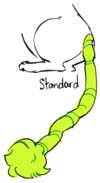
|
Medium
|
Lintlings on average have longer tails so that they can sweep across surfaces and listen in case another lintling needs help or there is a predator close by.
|

|
Long
|
Like the medium tail this is seen around a lot more often. Lintlings will often use their bodies to climb up each other to get down from high surfaces or up onto tall places. Long tails aid tremendously in this effort giving them a lot more climbing room!
|
| Uncommon Cords
|

|
Stubby
|
Small and twitchy, this tail doesn't seem to do much good. Only help it can do is laying flatter on the floor unlike the Puff tails and try to listen for other Lintlings.
|
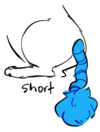
|
Short
|
Still not as useful as it could be, but lintlings make do with what they have. It's uncommon to see lintlings with such short tails.
|
| Rare Cords
|

|
Skinny Set
|
Much thinner than the average Lintling tail, not as useful for climbing as it can't necessarily support the Lintling's weight.
|
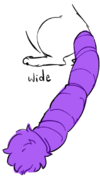
|
Wide Set
|
THICK cord! Stronger, but less dexterous than the average Lintling tail.
|
| Very Rare Cords
|

|
Puff
|
Very rare and not seen often. Some Lintlings will have just tufts on their bottom just like a rabbit. No corded tail or anything to help them sweep and listen. It can be helpful listening for other Lintlings, but not much else.
|
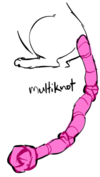
|
Multiknot
|
It’s usually damaging to tie a lintling’s tail in so many knots. But if they no longer have tail fluff to aid them in hearing, it doesn’t do them much harm. Though it’s still very rare to see them with so many knots, but would be considerably helpful while out exploring and foraging for supplies.
|
| Special Cords
|
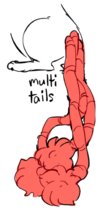
|
Multiple Tails
|
This is extremely rare and usually harmful for a lintling. Because they hear through the fluff on their ears and tails, having multiple tail fluffs could easily overwhelm the lintling who owns them. They would have to be cautious to keep them lifted in the air unless they were trying really hard to focus and listen to everything at once. Lintlings who are able to listen that well are a true asset and wonder to the lintling colonies.
|

|
Extra Long Cord
|
(Info Here)
|
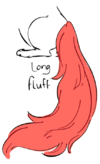
|
Long Fluff
|
Much like the Multiple Tails, because of the excess fluff they could easily be overwhelmed by loud noises. These tails could either cords or no cords.
|
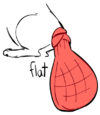
|
Flat
|
(Info Here)
|
Paws and Claws
| Image
|
Paw/Claw Type
|
Description
|
| Common Paws/Claws
|
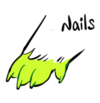
|
Nails
|
The most commonly seen in the Lintling community. Their small yet sharp nails are perfect to aid them in their craftwork.
|

|
Standard Fore/Hind Paws
|
The most common paw type Lintlings have, closest to mice and rats in looks.
|
| Uncommon Paws/Claws
|

|
Claws
|
A little more uncommon but seen around enough to know lintlings use their longer claws often to help with scraping together lint and carpet fuzz. They make for the best climbing too.
|

|
Roo Fore/Hind Paws
|
Like little kangaroo rats! Great for quick and agile movement.
|
| Rare Paws/Claws
|

|
Nailless
|
Rare and not normally seen in the community. Still Lintlings with no nails are generally gathers or sorters within the nest. They seem to handle the more delicate objects with their incredibly soft paws.
|
| Very Rare Paws/Claws
|

|
Retractable Claws
|
A rarity, but very dynamic.
|

|
Burrower Fore/Hind Paws
|
Great for digging!
|
Add-Ons/Body Types
| Image
|
Add-on/Body Type
|
Description
|
| Common
|

|
Standard Body Type
|
Your average Lintling, mouse/ratlike in form and nature.
|
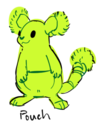
|
Pouch
|
(Info Here)
|
| Uncommon
|

|
Roo Body Type
|
(Info Here)
|
| Rare
|
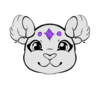
|
Studs/Bedazzling
|
Some lintlings are crafted with a gem in their forehead. Originally it was for decoration purposes, but as the lintlings came to life there was a strange sense of power emitting from them. Lintlings with gems on their forehead are said to contain an extraordinary amount of power. Their gems occasionally will sparkle and glow all on their own with no light to aid it.
|

|
Head Tuft
|
(Info Here)
|
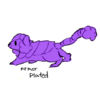
|
Armor Plated Body
|
(Info Here)
|
| Very Rare
|

|
Hair
|
There is no function or purpose to a lintling having extra fur or hair on their heads. So to see a lintling with hair is purely a decoration at best. They are creative by nature so it would make sense to rarely see a lintling or two with their own fashionable hair styles.
|

|
Scales
|
(Info Here)
|
| Special
|
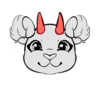
|
Antlers & Horns
|
(Info Here)
|

|
Glider Body Type
|
This is a rare alternative type of lintling. Most lintlings rely on crafts, running, or climbing to get around. But these specially crafted lintlings actually have the extra flesh to create flaps to catch the air and gently glide around the room. These lintlings are usually much more slender and athletically built. They are full of constant energy they need to exercise out. Gliders tend to be more confident in themselves and are even known to be risk takers. They will even lure pillowings away from groups of lintlings out on the move and keep them distracted while the others run.
|



































































